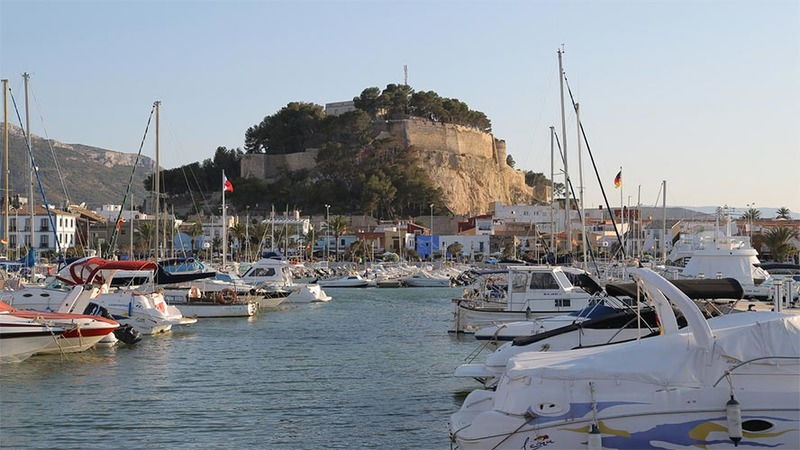
Denia is a bright and sunny city in the province of Alicante, on the Costa Blanca in Spain.
It is small - its population is only about 43,000 people. But in the warm season the number of people increases dramatically and it seems that Denia is full of tourists, always in a hurry and always looking around.
Restaurants and cafes also become crowded - tourists want to try the local cuisine, washing it down with a glass of well chilled drink. After that, the streets are full of cheerful and noisy people.
But that's a good thing - ordinary locals are also infected with such emotions, and it seems that the whole city becomes in a wonderful high spirits!
A bright landmark of the Costa Blanca
This Mediterranean village's rich history, gorgeous beaches and picturesque streets make it an ideal place to relax and explore Spanish culture. 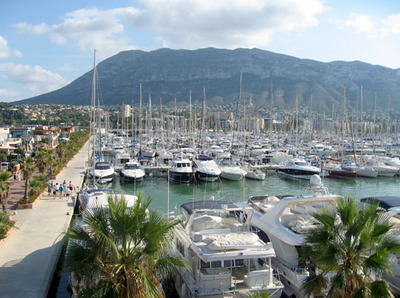
A little history of Denia..
Denia has a rich and varied history that dates back to Roman times.
The city was founded as a Roman settlement and its strategic location on the coast favoured trade and shipping. During the Middle Ages, Denia became an important fortress and trading port, thus boasting a diverse culture.
Over the centuries, the city has been ruled by different cultures, including the Byzantines and the Moors. Each of these peoples has left their mark on the architecture and culture of the city.
Modern Denia is a unique combination of old buildings, narrow streets and modern amenities. And, of course, us tourists.
What to see in Denia
As the town is small, it can be explored in one day. Of course, if you have the time, spending a few days here would be a great holiday!
Where to park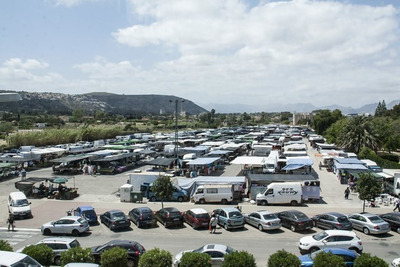
Although the city is actively working to create pedestrianised areas, Denia offers plenty of free car parks, as well as private car parks to suit all budgets.
Thanks to the variety of parking spaces, it's easy to find a suitable spot for your car just steps away from the centre or the beach. The key is to know where to look for it.
Free parking
Free parking is available at the entrance to the city, called Parking en la entrada de Dénia. It's only a 15-minute walk and you're already seeing the sights of Dénia.
Aparcamiento Miguel Hernández is a spacious free car park close to the fortress.
Another good option is Parking de Torrecremada, a very large car park where you can almost always find a space for your car.
But be aware that there is a street market on Mondays and if you decide to leave your car overnight, you may be fined and have your car towed away.
By the way, the local market is a great place to experience Spanish culture and traditions. It takes place in this car park every Monday from 8am to 2pm and offers a wide range of fresh produce including vegetables, fruit, cheeses, meat and fish. 
Back to the car park. You can try your luck and look for a space at Parking en avenida Montgó. This is also a spacious and, most importantly, free car park.
You can also find parking around the beaches, but it is quite problematic in summer.
Paid car parks
If you don't mind paying for parking, La Via Car Park is a great option and one of the most popular - it's right in the city centre. But there's a downside: it's a bit overpriced.
In the commercial area of the Zona comercial Marqués de Campo it is quite feasible to find parking.
Parking CentroMar is also a good option in terms of location: everything of interest is close by.
Now that we're parked, we can go for a walk.
Historical Centre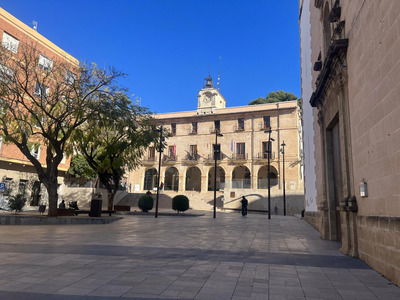
The old town and historic centre have a unique charm that reflects the centuries-old history of this lively city. Today, Denia has a well-developed tourism industry that attracts many visitors every year.
One of the most significant and famous monuments is the Castle of Denia, located in the historical centre, in the Les Roques area. This majestic structure preserves the origins of Denia's history and attracts thousands of tourists every year.
Castle of Denia - Castell de Dénia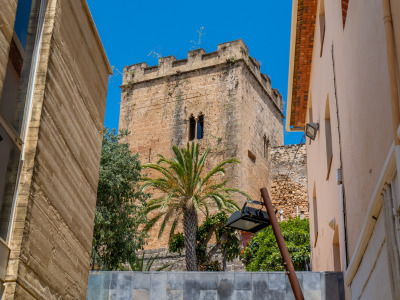
Denia Castle rises majestically above the town and beckons to be explored.
It was built during the Islamic period ( XI-XII centuries) and first served as the governor's residence.
During the Christian era, the fortress was fortified and became the centre of the city. In the Renaissance, defences such as the Red Tower were added. In the 19th century, the castle became private property, and in the 20th century it was returned to the community and restored.
Today, the inside of the castle can be seen:
- Portal de la Vila (12th century) with Almohad vault.
- Red Tower (15th century) of red sandstone.
- Cos de Guardia Tower (12th century), former guardhouse.
- Council Tower (XV century) with Gothic room.
- Vila Vella, remains of medieval houses.
- Baluard (XVIII century), defensive bastion.
- Baluard Gate with three arches from different periods.
- The Governor's Palace, now the Archaeological Museum with collections from different historical periods.
- The cobbled road (XIV century) to the Governor's Palace.
- Punta del Diamante, a Renaissance defensive bastion.
- Galliner's Tower, preserving Roman elements.
- Mig Tower (11th century), an Islamic structure with Renaissance additions.
- Portal dels Reis, the eastern entrance of Vila Vella leading to the harbour.
Once you have visited the castle, you can enjoy the views and go for a walk further along the historic streets of the city.
Castle Tunnel - Túnel del Castell
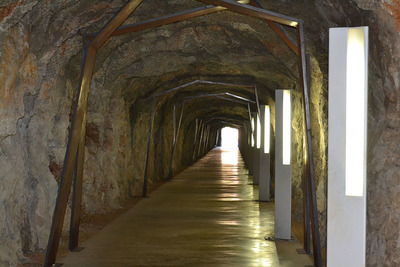
Another of the most interesting places in Denia's old town is the Castle Tunnel. This pedestrian passageway is about 200 metres long and connects the Consell Square with the Ronda de las Murallas.
The history of the tunnel under Denia Castle dates back to the Spanish Civil War.
It was built between 1937 and 1938 to protect civilians from bombing raids by La Pava's air force. After the war ended, the tunnel remained open, providing a link between the two parts of the city.
In 2011, it was reconstructed, after which both its maintenance and appearance were significantly improved, and it became cleaner and safer, something that had been sorely lacking before.
Town Hall - Ayuntamiento de Dénia
The Town Hall is one of the most important buildings in the city.
It is located in the pretty Constitution Square, in the heart of the locality, next to the Conseil Square and close to the Glorieta.
The Town Hall is close to Denia Castle and the tunnel. In addition, the building itself is located in a pedestrianised area, allowing you to enjoy a stroll along typical Spanish streets such as Via Loreto, Via La Mar and Via Marquesa de Campo.
Iglesia de la Asunción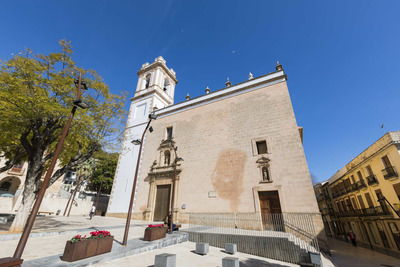
The parish church of Nuestra Señora de la Asunción is located here in the historic centre, next to the town hall (Ayuntamiento).
Built in the 18th century, it was rebuilt in 1939 after the war.
The church has two entrances: one leads into the church and the other into the Capella del Roser. Next to it is a brick bell. Inside you can see blue walls, pews, interesting paintings and delightful stained glass on the ceiling. All these combine to create an atmosphere of peace and awe.
Entrance is free, but it is important to respect the liturgical traditions. For example, every day, from Monday to Saturday, there is a mass at 20:00. We, the curious, are asked not to come.
But the other thing is holidays! The parish celebrates all religious festivals and if you are in the neighbourhood during this period, you should definitely drop by, it will be interesting!
Zona comercial Marqués de Campo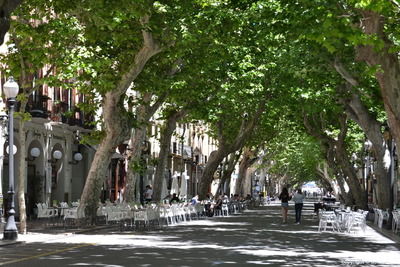
Marques de Campo, or Campos Street, has been the main artery of Denia since the late 19th century.
It is named after José Campo Pérez, the creator of the railway line between Carcaicentes and Denia.
Construction began in 1880 and in 1917 the street was connected to the sea. In 1954 it was paved and the pavements widened to protect certain trees.
This street is home to Denia's significant 20th century buildings, including the former Principal Theatre and the Hotel El Comercio, famous for its facade.
Shopping enthusiasts won't be bored on this street: there are plenty of restaurants, ice-cream parlours, shoe shops, jewellery shops, clothing shops, etc.
The street is also the centre of social life, with parades, carnivals, festivals and fairs. It becomes pedestrianised on Saturdays from 17:00 and is closed to vehicles until Monday.
The Marques de Campo street is an important cultural and social centre of Denia, where many events take place throughout the year.
Baix la Mar
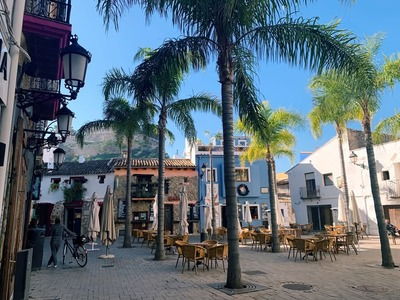
The fishermen's quarter or Baix la Mar in Denia is a picturesque place with a history linked to the sea and sailors. Its roots go back to the Arab period, when it was called ‘raval del mar’.
In the nineteenth century it was a maritime trading area and today it has become a centre of tourism.
The streets of the neighbourhood are a maze of low houses with bright colours. San Antonio Square is a popular place to relax again with numerous restaurants, bars and terraces where we tourists, after a long day of sightseeing, can finally relax and sit in the shade of umbrellas and sip a cool drink again. A wonderful and lively place!
Museums of Denia
- The Archaeological Museum of Denia (Museo Arqueológico) is located in the castle and displays archaeological finds from four civilisations: Iberian, Roman, Muslim and Christian. The museum was restored in 1984 and offers guided tours to explore the city's history up to the 18th century.
- The Museum of Ethnology (Museo Etnológico) is located in the historic centre and shows the life of bourgeois families of the 19th century who made their living from grapes. You can see household items, clothes and old photographs.
- The Toy Museum (Museo del Juguete) is housed in the old railway station and offers a collection of toys from the early 20th century, including metal and wooden pieces.
La Marineta Beach
If you want to enjoy sunny days, La Marineta beach is the perfect place to do so. The wide coastline and clear water create comfortable conditions for swimming and beach holidays.
Along the beach there are regular bars and restaurants where you can try fresh seafood and Spanish food.
There are also regular sporting events such as volleyball and kitesurfing, which will appeal to outdoor enthusiasts.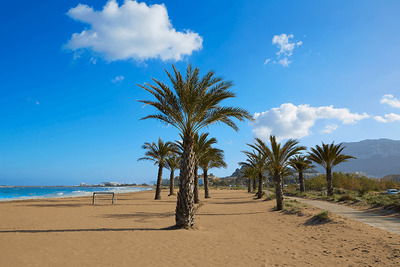
Les Marines Beach
Les Marines beach is a great place to relax. It is located northwest of the port and stretches for almost 3 kilometres, allowing comfortable accommodation with umbrellas and towels.
The beach is renowned for its clean water and quality service. Lifeguards and security guards are available during the summer season, as well as walking paths and services for people with disabilities.
There is a floating platform for children's entertainment, while adults can hire umbrellas and sun loungers. Canoe and skate hire, kiosks with various goods and sports fields are also available.
Whether you are travelling alone or with your family, Denia has something for everyone. Clean beaches, great food and a rich culture make this city an ideal destination for travellers. So if you haven't been to Denia yet, it's time to plan your trip and discover all the delights of this marvellous place!


 English
English  Español
Español  Русский
Русский